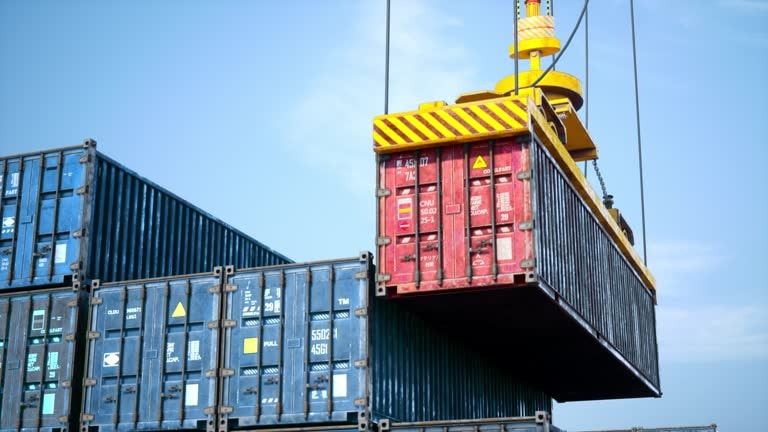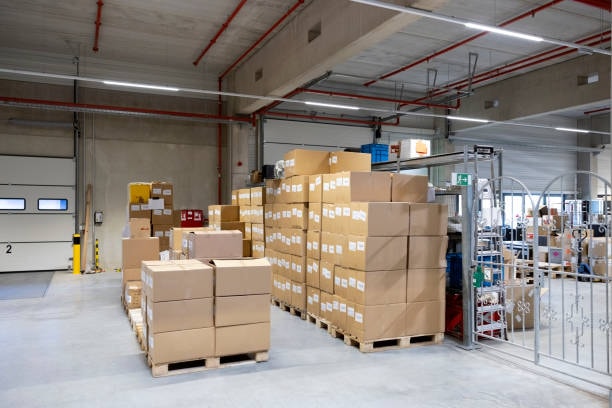The expenses of Container Freight Stations (CFS) represent fundamental economic aspects of international shipping operations and logistics management. Business owners and freight forwarders and logistics managers must learn to accurately compute these charges because they play a critical role in managing costs. This article presents a detailed examination of CFS charge components together with illustrative examples and comprehensive guidelines for effective calculation. We will examine tips together with advanced considerations for further clear understanding of the process while providing detailed examples.
What Are CFS Charges?

The Container Freight Station levies CFS charges as fees to carry out goods handling operations alongside storage activities and processing requirements. CFS facilities play an essential role as part of the logistical network because they serve Less than Container Load (LCL) shipping by uniting various shippers’ goods in containers in single container spaces.
Key Components of CFS Charges
- Handling Charges: A CFS operator collects fees to load and unload cargo at their facility in addition to charge for moves between locations. These charges cover labor costs, equipment usage, and the general movement of goods.
- Storage Charges: The CFS will charge costs to store cargo when customers exceed the given free storage limits. The costs for storage vary based on the specific qualities and size dimensions of held goods.
- Consolidation and Deconsolidation Charges: A set fee exists for services such as merging several small shipments into one container and subsequently breaking down consolidated shipments into separate entities container yards. The operational success of LCL shipments depends heavily on proper implementation of this process.
- Documentation Charges: Fees for processing paperwork and customs documentation. For continued operational efficiency owners need to maintain correct documentation since this prevents operational delays and smooth processes.
- Customs Examination Charges: The costs incurred during customs inspections cover a variety of actions including manual inspections and scanning as well as goods sampling.
- Miscellaneous Fees: Extra expenses include secure facilities fees alongside expenses for cleaning up damaged goods together with fees for handling specific lightweight or heavy shipments.
Factors Influencing CFS Charges

Volume and Weight
Shipment costs at CFS bases hinge upon weight as well as the size of container yard the package. For instance:
- Volume-Based Charges: Bulk shipment costs are measured as cubic meter volume and correspond to larger packages cfs fees typically cover.
- Weight-Based Charges: Weight thresholds determine the application of these charges when they exceed their maximum limit mostly reserved for dense load types container loads.

Type of Goods
- Perishable Items: Higher charges due to specialized storage requirements like refrigeration or climate control.
- Hazardous Goods: Extra costs exist for managing shipments alongside compliance costs for security regulations which demand appropriate handling methods and transportation systems.
- High-Value Goods: Extra security fees apply to valuables because of concerns about theft and damage.
Storage Time
Storage charges grow sharply when merchandise stays empty containers or in custody for longer than authorized free times that span from 3 to 7 days cfs station. The length of time stored items remain in facilities results in rising costs which follow an exponential pattern.
Location of the CFS
The geographical position of CFS facilities impacts charges through inequalities created by labor market costs together with real estate values and area-specific regulatory standards. Location of destination port determines the fee structure of CFS facilities so facilities near ports in metropolitan regions have higher rates than their rural counterparts.
How to Calculate CFS Charges

To calculate CFS charges accurately, follow these steps:
Step 1: Identify the Type of Shipment
Check if your shipment qualifies as an LCL shipment or as Full Container Load (FCL). CFS charges appear predominantly for LCL shipments because the combination of consolidation abilities with deconsolidation services requires these fees destination cfs.
Step 2: Measure Volume and Weight
Calculate the CBM or weight of your cargo:
- CBM = Length (m) × Width (m) × Height (m)
- The greater weight between volumetric weight and actual weight results in determining what fee applies.
Step 3: Assess Storage Requirements
Determine the free storage period offered by the CFS and calculate additional charges for exceeding this temporary storage duration:
- Additional Storage Charges = Daily Rate × Number of Days Over Free Period
Step 4: Include Handling and Documentation Fees
- Handling Charges follow a fixed rate system based on CBM units or they use a tonnage system according to each CFS provider’s price structure.
- Companies charge a flat fee for documentation services which depends on how complicated the shipping paperwork becomes.

Step 5: Account for Additional Costs
- Customs Examination Fees: Shipment and customs requirements determine the distinct range of fees container freight station cfs.
- Security and Miscellaneous Fees: You must include all specific fees recorded by the CFS for your shipment’s processing requirements container freight stations form.
Step 6: Double-Check for Hidden Charges
Check with the CFS about any undisclosed fees which include penalty costs and costs of reworking cargo items with incorrect labeling.
Example Calculation
Consider a shipment with the following details:
- Volume: 10 CBM
- Weight: 2,000 kg
- Storage: 2 days beyond the free period
- Handling Charges: $20 per CBM
- Documentation Fees: $50
- Storage Rate: $5 per CBM/day
- Customs Fees: $30
Calculation:
- Handling: 10 CBM × $20 = $200
- Storage: 10 CBM × $5/day × 2 days = $100
- Documentation: $50
- Customs Fees: $30
Total CFS Charges: $200 + $100 + $50 + $30 = $380
Large shipments needing specialized attention require CFS staff consultation to determine appropriate calculation methods.
Tips for Reducing CFS Charges

Optimize Shipment Planning
- We should consolidate our shipments by removing excess material since this creates lower costs for handling and storage fees.
- Your CFS storage duration will decrease when you strategically schedule deliveries.
- Proper documentation must be correct to prevent delays and charges from minus-corporations.
Negotiate with CFS Operators
- Talk to your CFS operator about their rates since regular business advantages you with improved pricing.
- Review available options for regular shipment discounts as well as volume price reductions.

Choose the Right CFS Location
Identification of suitable CFS facilities should be done through checking their closeness to company locations combined with service quality alongside exact pricing. Choosing cfs facility at the appropriate location brings double benefits through cost reduction and time efficiency.
Leverage Technology
By using shipping and logistics programs businesses can track shipments during transit as well as manage stock levels and monitor expenses through instant access. Using advanced proactive measures in shipping process enables organizations to locate cost-saving opportunities.
Advanced Considerations

Impact of Seasonal Fluctuations
Fees that incorporate shipping term CFS expenses change throughout different seasons of yearly demands. Shipment costs will be higher during busy holiday times when shipping volume reaches its peak.
Regulatory Changes
Research both domestic and international shipping rules because new regulations tend to affect the costs of the CFS in shipping and customs services. Companies need to pay more for shipping hazardous materials because of enhanced safety requirements.
Special Handling Requirements
Extra costs will apply when sending large packages or products needing temperature regulation. The requirements should get discussed beforehand to prevent unpleasant surprises.
Conclusion
The ability to determine CFS fees and charges proves essential for businesses which want to effectively control their shipping expenses. The application of systematic calculations combined with component knowledge enables business operators to prevent unexpected fees as they enhance their logistics operations. A combination of strategic planning and negotiations using modern technology enables businesses to lower their logistics expenses substantially without sacrificing operational speed.
The CFS charges build an essential part of the logistics system which companies using international trade need to understand. Businesses can improve resource management and cost forecasting by understanding the elements that go into understanding CFS charges including handling fees and storage expenses and documentation costs and customs fees. Logistics managers who understand the calculation framework together with volume parameters and storage duration and location information can prevent surprise costs while achieving operation excellence.
Reduction of CFS charges becomes achievable when businesses implement strategic shipment planning supported by proper documentation together with technology implementations designed to optimize their business operations. Market dialogue with other CFS warehouse operators followed by cost-effective facility site selection allows for considerable cost reduction. Business survival in global markets requires staying updated about shipping market changes because this information enables cost control and market competitiveness.




